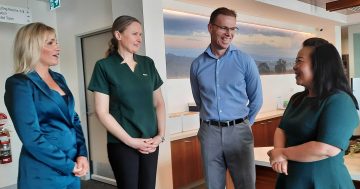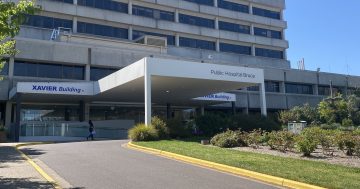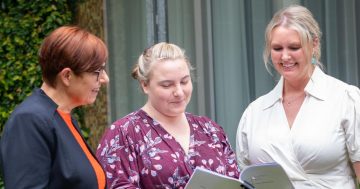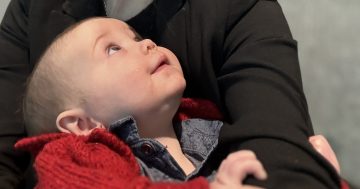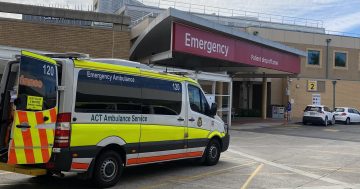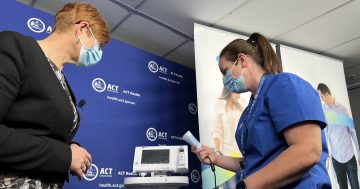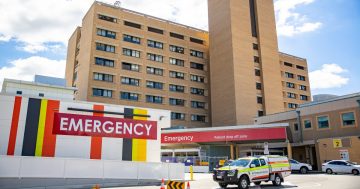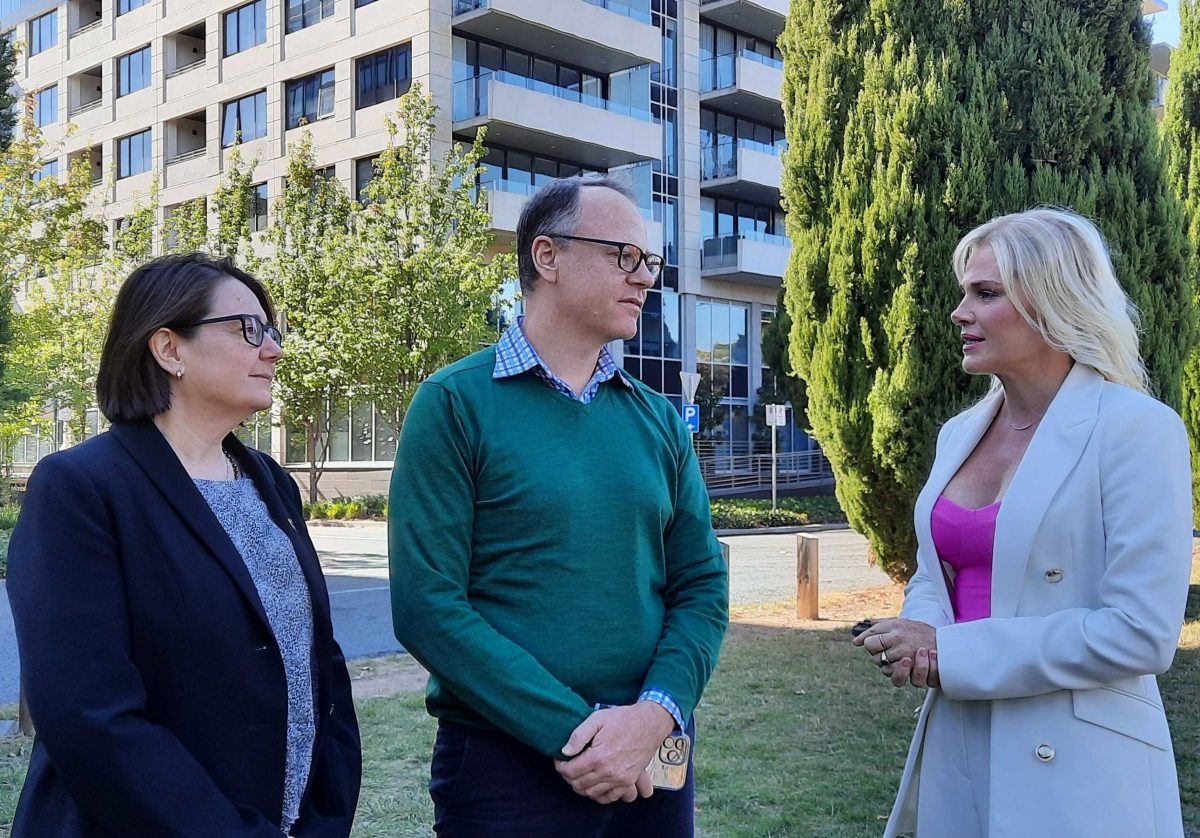
Dr Felicity Brims and Dr Ben Stephens talk to Liberal Health spokesperson Leanne Castley about the rebates. Photo: Ian Bushnell.
Canberra women struggling to conceive will be able to access up to $2000 to defray the out-of-pocket costs of IVF or certain Assisted Reproductive Technology (ART) treatments if the Canberra Liberals win government in October.
The un-means tested rebates, costing $5.4 million over four years, will be available for all ACT families undergoing fertility treatment from an accredited provider to assist with costs not reimbursed by Medicare or private health insurance.
They will cover out-of-pocket expenses of up to $2000 incurred when undergoing in vitro fertilisation or certain assisted reproductive technology and up to $1000 for intra uterine insemination (IUI).
The rebates will be available on or after 1 October 2024 as a one-off payment for one cycle of IVF or IUI treatment from an accredited ART provider.
The rebates will also include a maximum $250 rebate for out-of-pocket expenses incurred undergoing initial fertility tests from the same clinics, to help women determine their suitability for ART treatment.
ACT residents who travel interstate to eligible interstate fertility clinics which offer specialised treatment not available in Canberra will also be able to receive the rebates.
Health spokesperson Leanne Castley said the scheme would help the estimated 1350 Canberra women who go through IVF or IUI every year.
“We know that one in six Australians do struggle with infertility, and we know that in this cost of living crisis money is tight and families are struggling,” she said. “The cost is often a huge barrier, and we want to do something to help them through that journey.”
Ms Castley said Health Minister Rachel Stephen-Smith had said she would look into financial assistance for women undergoing ART treatments but nothing had eventuated.
Fertility is a prominent issue in the ACT, which has a large proportion of professional career women who delay childbirth into their 30s and later.
IVF Australia Generalist Obstetrician and Gynaecologist Dr Ben Stephens said Canberra had the oldest average age for first-time mothers in the country.
“So a woman’s fertility does start dropping from age 35 not dramatically, but there is a fertility issue with egg quality after 35,” he said.
“We have working professional women and couples who are a lot older than cohorts in other states and are getting closer to where fertility starts shifting as well.”
Genea Canberra Clinical Director Dr Felicity Brims said age was a big factor in the length and success of IVF treatments.
She said 80 per cent of women under the age of 40 fall pregnant from their first cycle, then a further 60 to 80 per cent fall pregnant from a second cycle but for those over the age of 40 it could be three cycles. For a small percentage of women IVF won’t be successful.
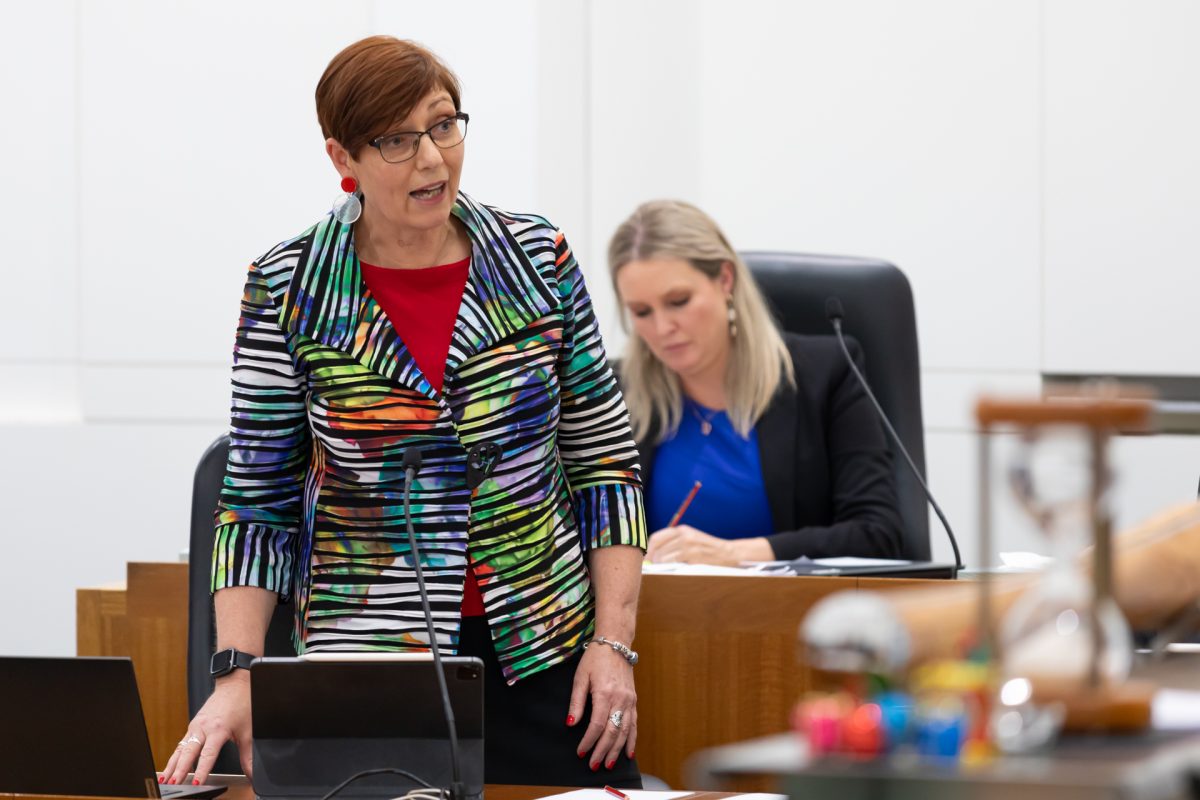
Health Minister Rachel Stephen-Smith: “Canberrans can be assured that any approach we take will extend to same sex couples and single parents.” Photo: Michelle Kroll.
Both Dr Stephens and Dr Brims said IVF was usually a last resort after looking at lifestyle and other factors.
“Most of us who work in fertility would aim to try and do everything else before they went to IVF,” Dr Brims said. “It’s a procedure that carries some risk, it doesn’t always work for everybody, and it’s expensive. So if we can get away without it, then most of us would try and do something else.”
Dr Stephens said that unless specific fertility issues were detected in initial investigations, cycle tracking, adjusting lifestyle factors such as weight loss or assisting ovulation usually resulted in couples falling pregnant by themselves.
Ms Castley said, if elected, a Liberal government would look at how the scheme went before expanding it.
She was also investigating what could be brought into the public health system but at this point just wanted to help couples cover some of their costs.
“It’s important to know that if elected in October, we will kick it off as quickly as we can and families are eligible from the first of October so that that will grab any families who are already going through that journey,” Ms Castley said.
“It’s just a great way that we can say we’ve got your back and we care about you.”
According to IVF Australia, one cycle of treatment can cost $11,121 with out-of-pocket costs of $5706.
Health Minister Rachel Stephen said Labor’s approach was to include all people wishing to access assisted reproductive treatments, not just the medically infertile.
“This is an astonishing example of the Canberra Liberals prioritising healthcare for some over others based on ideology,” she said.
“ACT Labor believes in equal access to healthcare for people of all genders and sexualities.
“We are continuing to explore options to make ART more affordable, and Canberrans can be assured that any approach we take will extend to same sex couples and single parents.”
Ms Stephen-Smith said the government had passed assisted reproductive technology legislation to make it safer and more equitable for parents and donor-conceived children, including requiring ART providers to offer counselling and support services.
“We have also included access to five days of assisted reproductive leave per year for ACT public servants, allowing employees going through IVF or other assisted reproductive processes time to attend appointments and procedures without having to access their other leave entitlements,” she said.
ACT Labor also supported the Albanese Government establishing the ART storage funding program to remove out-of-pocket costs for fertility preservation to freeze eggs, sperm and embryos for people who have cancer or are at risk of passing on a genetic condition.












